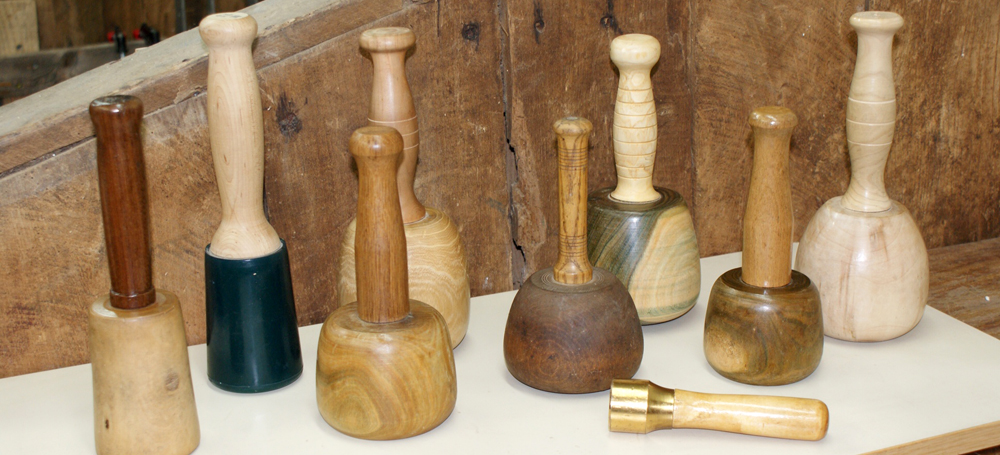Wood
A variety of timber passes through the workshop, with the majority of it being British and European hardwood. Lime is the usual choice of carvers, favoured as it is relatively easy to work and has little discernible grain pattern to distract from the finished carving. However, our members like a challenge and we have at least one who has produced much work in oak, a beautiful timber but much harder to carve. Fruit woods such as apple and cherry are also used when available, particularly if we know someone who is taking down a tree in their garden. There are few woods that cannot be carved effectively; availability and the experience of the carver dictate the choice. We usually have some lime that can be used by new carvers.
Those of us who make constructed items, such as furniture, are lucky that the club is within reach of two or three good timber yards that supply quality hardwoods.

Tools
For new carvers and woodworkers, we would strongly suggest that you come and see us before you buy any new tools. That gleaming set of carving tools in your local hardware store, or on the internet, that costs less than you expected, may be best avoided. You are unlikely to know which tools you will need until you have started work and sets almost always include at least one item that you will never use.
The club has a good selection of quality carving tools for use in the workshop, so you can arrive equipped only with enthusiasm. If however, you have inherited some old tools then do bring them along. Old steel is often of high quality, even when covered in rust, and damaged handles can always be replaced if necessary.
Carving tools, often called gouges, come in a huge variety of sizes and types. The degree of curve is referred to as the ‘sweep’ and the width is measured in millimetres for new tools (Imperial for old ones). We can advise on purchasing tools when the moment arrives and have catalogues from suppliers for reference.

